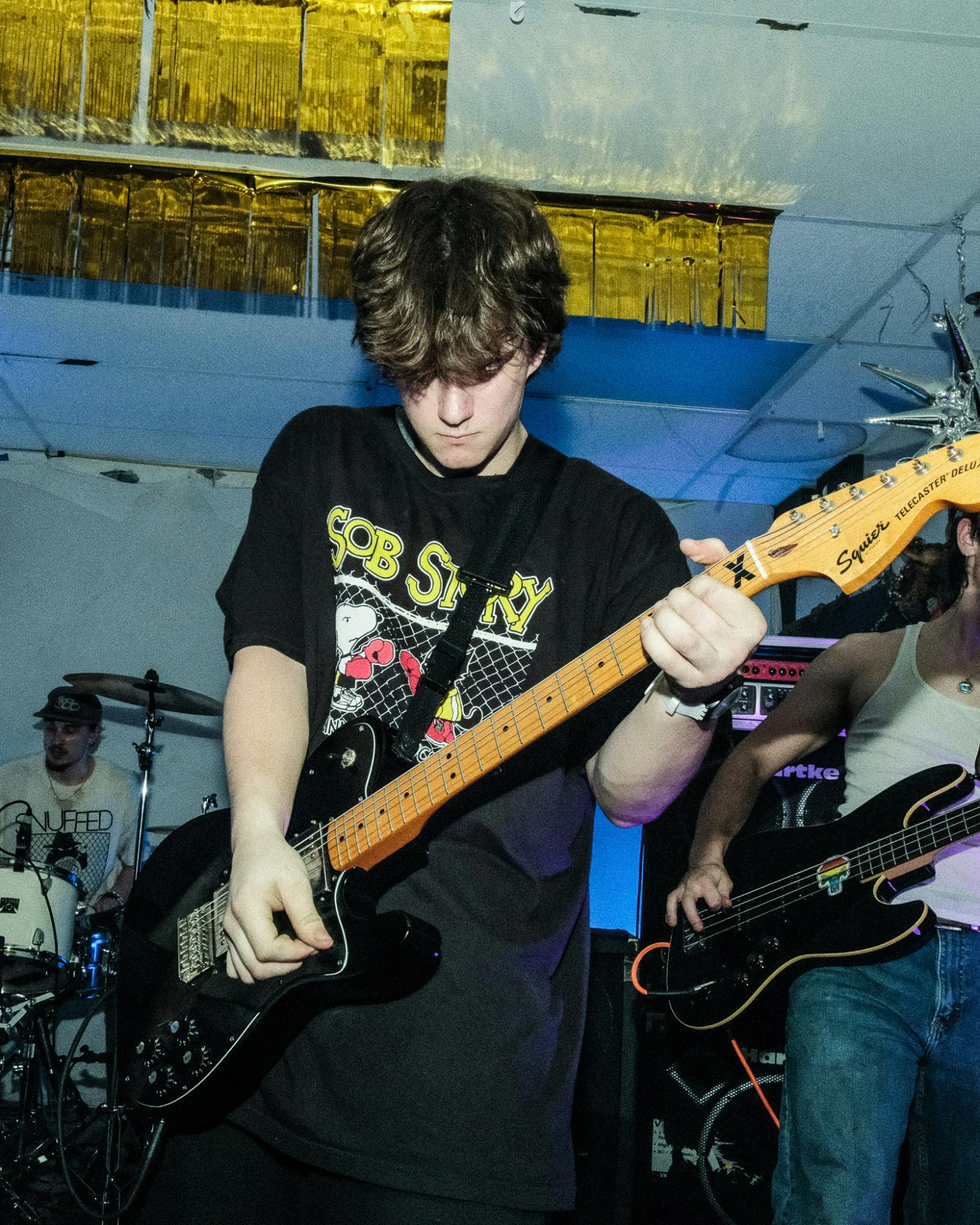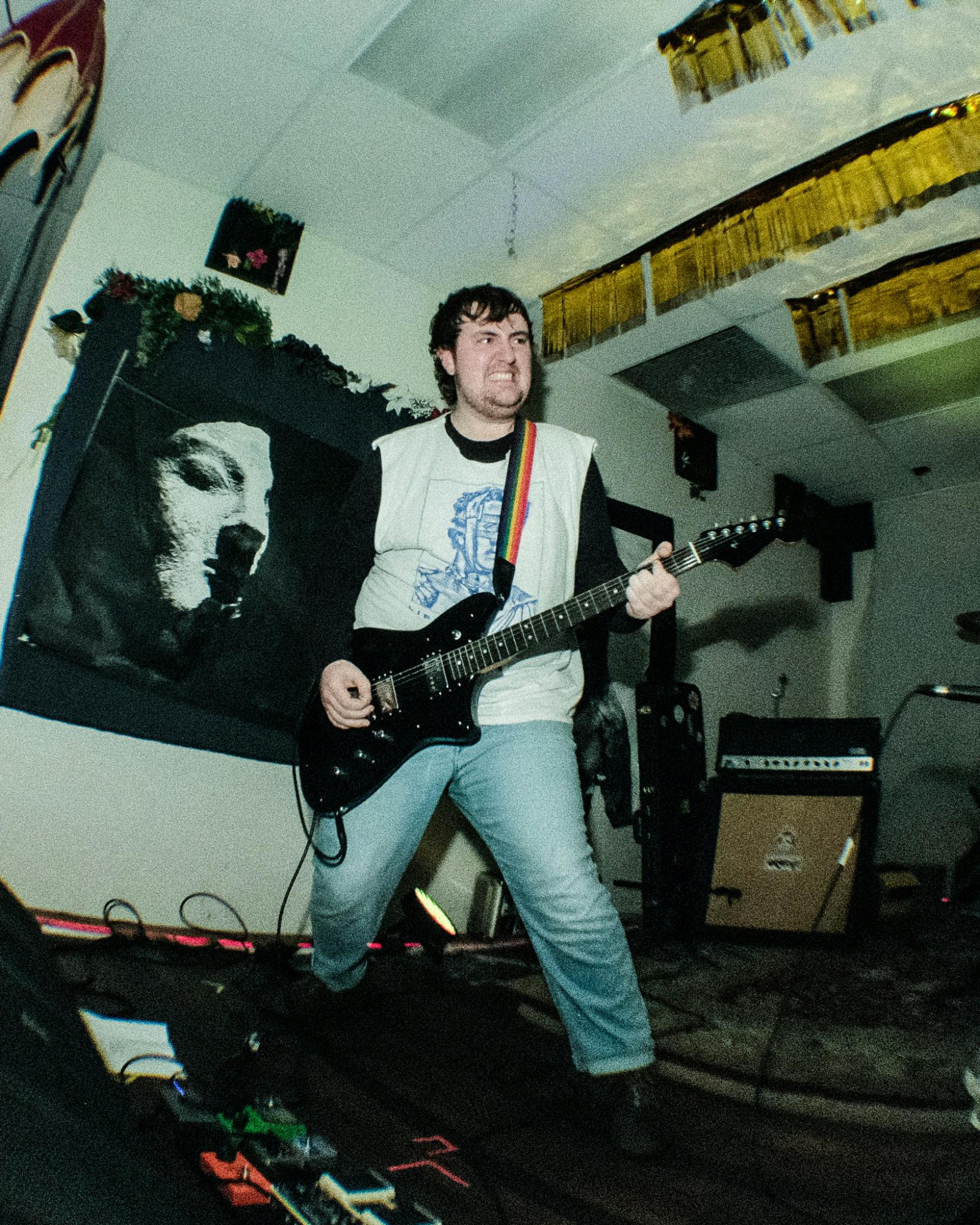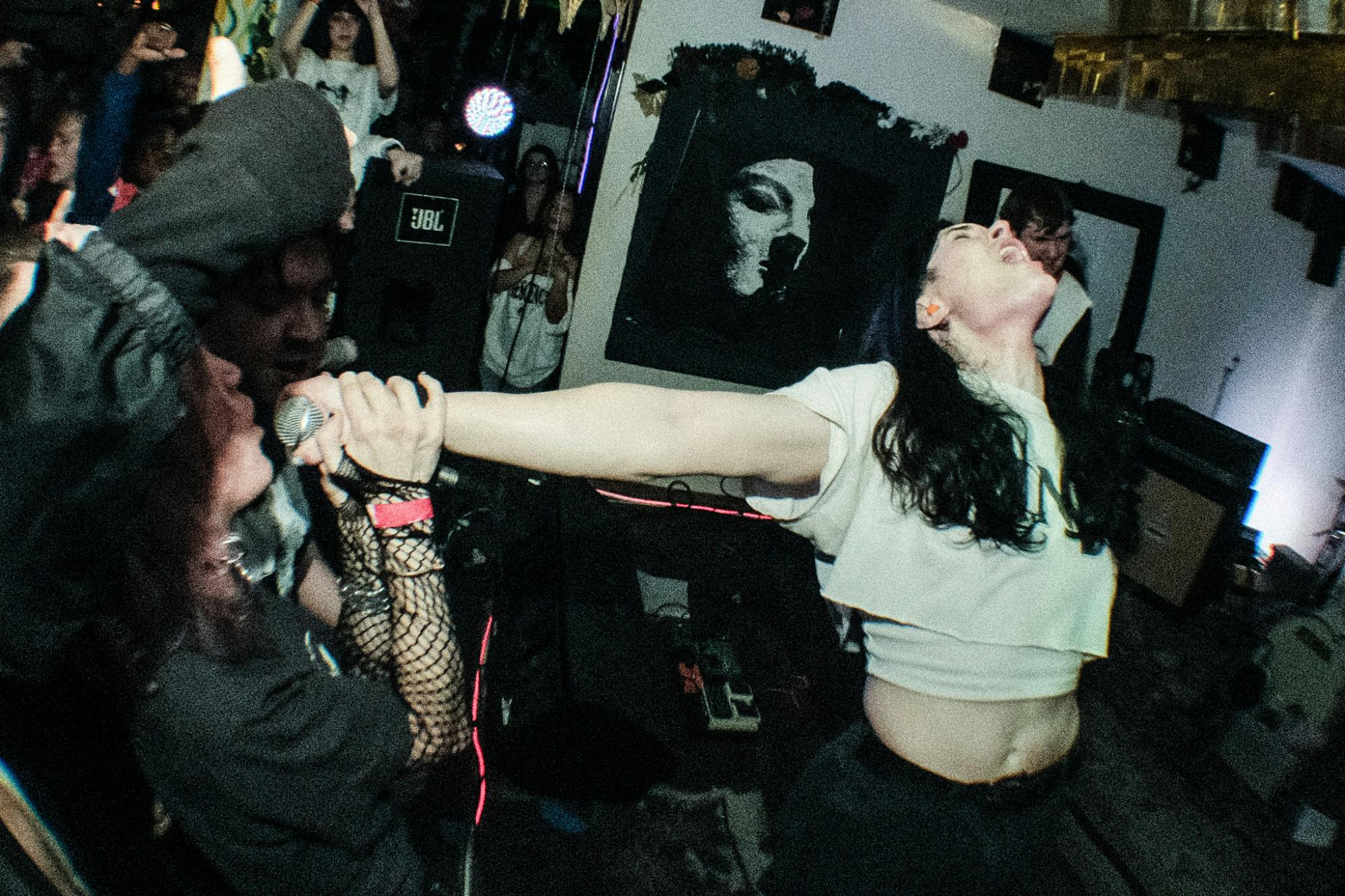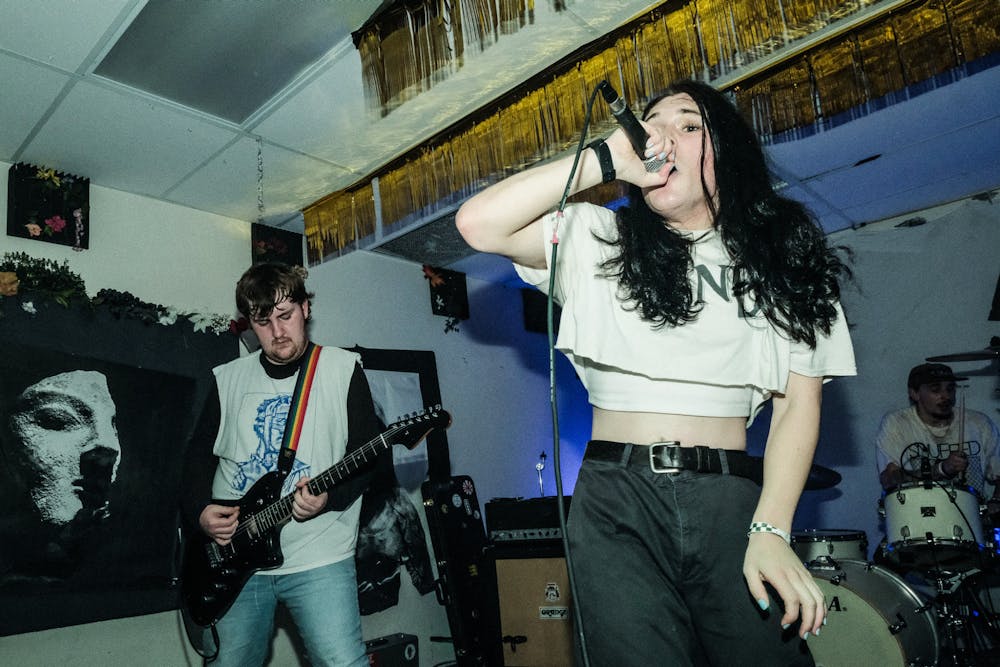It’s Jan. 27 at Healer DIY in Indianapolis. The weather is typical for the time of year, cold and rainy. Inside the venue, loud music blasts through the warmly lit room, which includes several art installations of objects ranging from static TVs, crochet, shining tinsel and countless others impossible to describe. Behind all of the visual and audio stimulation, the five Midwest hardcore bands, Shroud, Sign Language, Velocity, Halfway House and Senescence prepared for a show of a lifetime.
The definition of “hardcore” music varies depending on who you ask, so it may be more simple to explain the history. Hardcore was a genre born in the 80s after punk was co-opted to become more palatable for the masses. Some punk fans rejected the genre and decided to form their own branch that was directed toward working-class people and wasn’t concerned with the public’s opinion. Previously, punk fans developed a subgenre that focused on DIY aspects and the preservation of past ideals.

Photo Courtesy of Darin Harger

Photo Courtesy of Darin Harger
Fiona Heaton, the lead vocalist of Senescence, is no stranger to the hardcore scene as she has been involved in several hardcore-adjacent bands within the past four years. When asked to describe her music, she described her early music as more “emo, mid-tempo melodic, and lots of singing.” It has since evolved after she noticed that the heavier/faster bands got better crowd reactions, “I’m always trying to chase a good crowd reaction.” For their recent album, World To Gain, she describes the genre in her own words.
“With this most recent EP, we still have our emo aspects, but we are very squarely a hardcore band. We put a lot of emphasis on the dance parts and being loud, having good crowd reactions, and just having hooks to have people sing along with,” said Heaton.
Heaton shared that the band’s creative process is as much of an individual effort as it is a group one. “I will usually end up writing full songs by myself, and that applies for most of my band as well. They’ll usually write a full song, I’ll write a full song, then we’ll bring it into practice and see what little tweaks and changes that need to be made.”
According to Heaton, who fronts the headlining band, some people tend to steer away from the hardcore scene because of negative stereotypes. Heaton describes the common misconceptions of the scene being “some macho, manly, violent scene that is unwelcoming to anyone but big buff white men.” This could not be further from the truth. Heaton points out that some negative viewpoints towards the LGBTQ+ community still exist within the hardcore scene, as well as other communities. Heaton hopes for a different future within the hardcore scene.
“The ideal hardcore scene is built upon a tight knit community of people sharing ideas, helping one another, and keeping the DIY ethos alive,” Heaton said.
The Indy hardcore scene is known to attract music fans from all walks of life: some old, some young, some veteran attendees, some new, some even traveling from several hours away to attend. Many fans are members of the Straight Edge community which abstains from substances like drugs and alcohol, while some are… not. The scene is also quite inclusive of the LGBTQ+ community. Somehow, all of these people can find a similar interest in the inclusive and welcoming Midwest hardcore scene, as shown by attendee James Jones.

Photo Courtesy of Darin Harger
“I love the sense of community. Everybody’s here for the same reasons; to have fun and see some sick bands,” Jones said.
The show on Jan. 27 was flooded with experienced show-goers and newbies alike. One new attendee, Conner Peckinpaugh, expressed his excitement and curiosity in the new experience, mostly because of the different crowd.
“I’ve never been to a hardcore show like this before, it’s a first, but I’m excited to see how it is. It’s a very different crowd. I’m kind of used to push pits so it’s my first time seeing actual slam dancing,” Peckinpaugh said.
Despite Peckinpaugh’s initial hesitation about getting in the pit, he eventually joined the fray.
“I was a little scared but as soon as it got going I was like, this is totally fine,” Peckinpaugh said. “I tried to stage dive but I couldn’t get close enough to that speaker to jump off of it.”
Lilly Bosanquet, Peckinpaugh’s bandmate in another local band, Grenadelia, was also curious about the pit.
“I’ve never been to a show where you’re able to mosh, so I’m very curious to see what it’s like,” Bosanquet said.
The show was a monumental success both for the venue, bands, and fans alike. It was a sold-out show, and people were packed shoulder to shoulder to support their favorite hardcore bands. The hardcore scene is unique in terms of the rich community that it provides and the variety of people in attendance at the shows. Attending shows like these is a great opportunity for those looking for something a bit out of their comfort zone and making some great friends.
Ayva Edwards (she/her) is an English major with a concentration in Creative Writing who is graduating from IUI in August. In her free time, she enjoys performing with her band and all things music.





